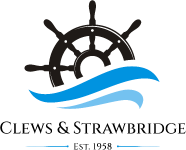Your Guide to Buying an Outboard Motor
Outboard motors are versatile and power-efficient engines that help you reach higher speeds quickly and conveniently. It’s no surprise that they are often the first choice of speedboat lovers, fishing enthusiasts, and boaters who want to create extra space onboard their vessels.
If you are thinking about buying an outboard engine but are unsure where to begin, we can help. Read on to learn a few strategies to select the perfect motor for your boat, and for more information, contact Clews & Strawbridge.
2-Stroke vs. 4-Stroke
The first consideration for buying an outboard motor is whether to get a 2-stroke engine or a 4-stroke model. Don’t assume that a 4-stroke motor is always a superior choice. It can be ideal in some specific instances, but not all. Before exploring your options, you might want to understand how each model works.
In a four-stroke outboard motor, the gasoline is never mixed with the oil unless there is a breakdown. The gasoline burns via a cylinder, which circulates lubricating oil through a separate system. Conversely, in a traditional 2-stroke engine, the carburetor or injector directly receives the oil and gasoline mix into the cylinder through an intake valve. In this process, the exhaust valve opens to let at least 20 percent of the fuel escape unburned.
There is also a third option, which is the direct-fuel-injection (DFI) 2-stroke outboard model. In these engines, the fuel is sprayed directly into the cylinder, and the piston covers the exhaust valve with precise timing. This helps prevent fuel loss, saving you money in the long run.
Whether you choose a DFI 2-stroke motor or a 4-stroke engine, you can be sure that you will get improved fuel economy compared to a traditional 2-stroke motor.
One vs. Two Motors
Many first-time buyers often find it hard to determine whether they should get one or two outboard motors for their boat. We suggest our customers struggling with this situation consider their budget and the adventures they plan to enjoy on the water when finalizing their decision.
Typically, offshore fishing applications require a dual-motor setup. Having two engines instead of one helps when you are docking your boat. As the motors’ propellers rotate in the opposite direction, they will make it easier for you to “park” your vessel quickly and safely. Dual engines also help you skip worrying about losing one of them at sea.
If you choose to get two motors, keep in mind that you will have to pay more upfront. This will also mean you will need to maintain two units instead of one. Evaluate the different conditions to determine whether you should get one or two outboard motors.
Size Considerations
Finally, you will also want to factor in the size of an outboard motor that will best support your marine lifestyle. It helps to consider your manufacturer’s maximum rating when selecting the perfect size. This will allow you to skip any models that are less powerful than what you might need for successful adventures. At the same time, the rating will help you avoid getting an engine that’s too powerful for your boat.
We hope you can use these strategies to select the perfect outboard motor for your boat. If you need more information or want to explore a few models in person before finalizing your decision, visit Clews & Strawbridge. Our dealership is in Frazer, PA, where we proudly serve those from Philadelphia and West Chester.
